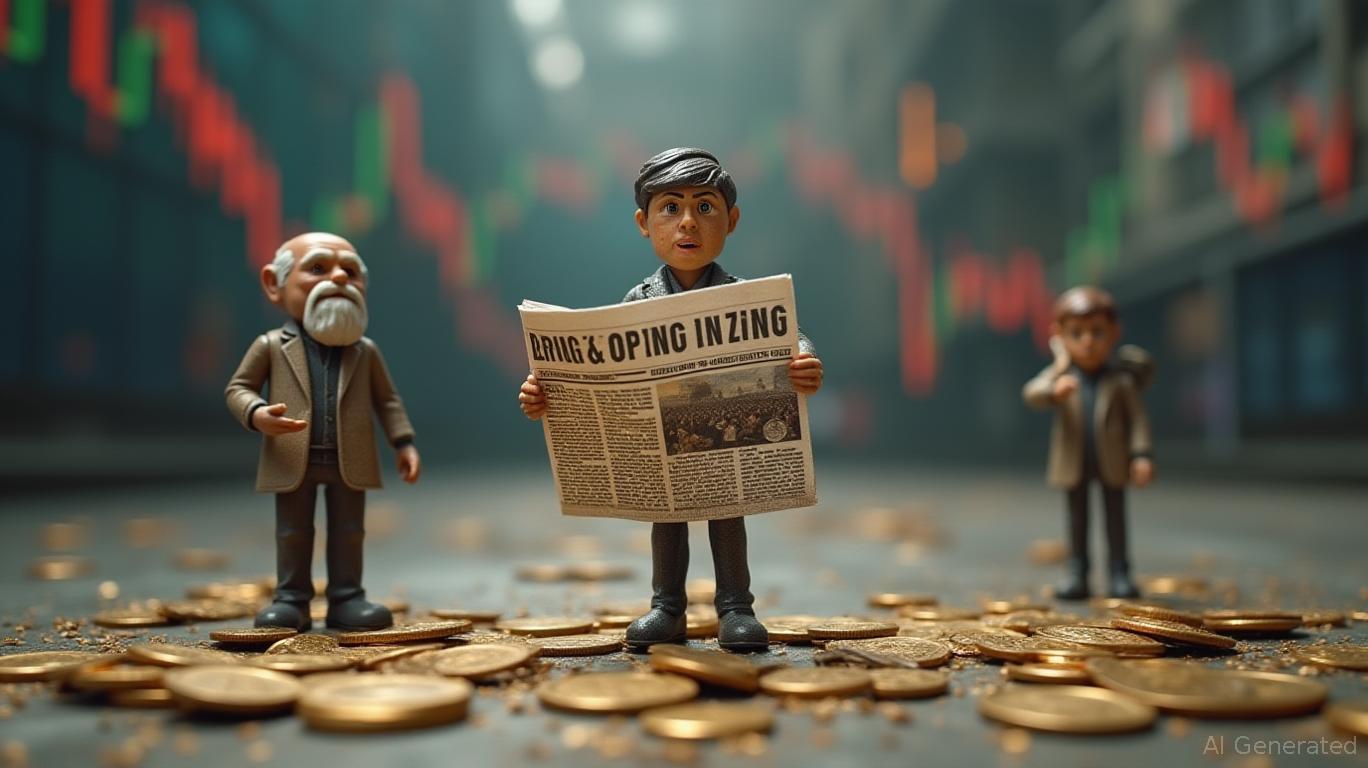Private Capital Soars to $22 Trillion: Progress or Potential Threat?
- Private capital markets now exceed $22 trillion, rivaling global economies as companies delay public listings and favor private funding for flexibility and cost savings. - Private equity outperforms public markets by 6% annually, while opaque lending practices in $1.7 trillion private credit raise risks highlighted by Moody's and Capital Economics. - Rapid private credit growth (20% annual U.S. expansion since 2010) faces scrutiny over hidden leverage, with JPMorgan's Dimon warning of systemic "cockroach
The private capital sector has surged to an immense $22 trillion, putting it on par with the world’s second-largest economy, according to
Over the past decade, private equity has delivered annual returns that outpace the S&P 500 by an average of six percentage points, attracting investors with the allure of greater profits and more operational freedom. Companies also avoid the regulatory expenses tied to public markets, which BofA estimates to be roughly 4% of the median U.S. firm’s market value. Additionally, private markets have demonstrated more resilience than public ones, with steadier fundraising and less vulnerability to economic shocks, according to the Investing.com report.

Yet, the swift rise of private credit—a $1.7 trillion segment within the private capital universe—has sparked concerns.
Capital Economics has also voiced apprehension, highlighting the unsustainable speed of private credit’s expansion. The U.S. private credit market has grown by 20% each year since 2010, and analysts caution that this pace cannot last. "With so little public data on credit quality, assessing the true risks is difficult," they observed, adding that investors are already factoring in possible losses. JPMorgan CEO Jamie Dimon has issued similar warnings, likening hidden dangers in private lending to a "cockroach" scenario—where one problem hints at more beneath the surface, as mentioned in a
The discussion around the risks and rewards of private capital also touches on major deals and tech investments. Meta’s $30 billion data center project in Louisiana—the largest private capital transaction to date—illustrates how private credit is powering infrastructure growth. However, with 95% of generative AI initiatives reportedly failing to generate profits, critics warn against excessive borrowing. "We take a cautious approach to forecasting future cash flows because their trajectory is so uncertain," said Ruth Yang of S&P Global Ratings, emphasizing the unpredictability of long-term AI infrastructure returns, as noted in a
Regulators and investors are now wrestling with the challenge of encouraging innovation while maintaining oversight. Although private capital provides adaptability and control, its lack of transparency could introduce systemic risks. As the boundaries between public and private markets become less distinct, this $22 trillion asset class is transforming global finance—offering both extraordinary prospects and significant hurdles.
Disclaimer: The content of this article solely reflects the author's opinion and does not represent the platform in any capacity. This article is not intended to serve as a reference for making investment decisions.
You may also like
XRP News Today: Rising Number of XRP Wallets Sparks Optimism for Crypto Summer as Institutions Increase Investments
- XRP sees 21,595 new wallets in 48 hours, Santiment's largest surge in eight months, as price rebounds from $2.2 support. - Technical indicators show bullish RSI divergence and potential reversal patterns, with $2.6 resistance as key hurdle. - Ripple's $500M institutional investment and Mastercard-led RLUSD integration boost XRP's institutional adoption and regulatory clarity. - Ethereum's ecosystem expansion and potential XRP ETF listings amplify crypto summer optimism amid Fed's QE expectations.

Zinc's Decline: An Early Warning Sign for the Crypto Industry
- Digital asset treasuries face sharp sell-offs as investor confidence wanes, with the S&P GSCI Zinc Index dropping 1.56% on Nov 5, 2025. - The zinc index's volatility mirrors crypto market declines, signaling a shift to safer assets amid regulatory uncertainty and macroeconomic pressures. - SEC actions against crypto platforms have intensified market jitters, with analysts warning of cascading liquidations if declines persist. - Zinc's performance now serves as a key barometer for digital asset risk, refl

Dogecoin News Today: Dogecoin's Unstable Buzz Fades as ETFs Turn Attention to Alternative Coins
- Dogecoin (DOGE) hovers near $0.15704, with analysts warning a breakdown could trigger sharp declines amid waning retail and institutional interest. - On-chain data and derivatives metrics signal deteriorating sentiment, as Bitcoin/Ethereum ETF outflows shift capital toward altcoins like Solana . - Weak large-holder support and declining community-driven hype expose DOGE to volatility, with prices at risk of falling below $0.15 without fundamental catalysts.

Chainlink and SBI Join Forces to Integrate Blockchains and Boost Institutional Adoption of Tokenized Assets
- Chainlink partners with SBI Digital Markets to build cross-chain digital asset solutions using CCIP technology. - Collaboration aims to accelerate institutional adoption of tokenized assets via secure multi-chain operations and existing pilots with UBS . - CCIP addresses blockchain interoperability challenges, positioning SBI Group as a key player in Japan's regulated digital asset market. - Recent partnerships with Ondo Finance highlight growing demand for cross-chain infrastructure in tokenized real-wo
